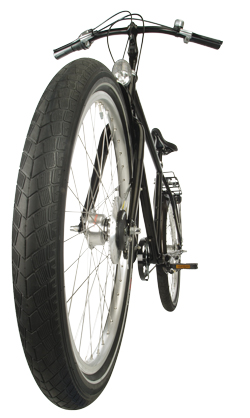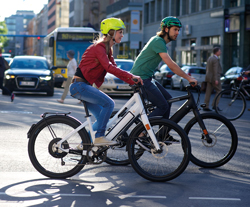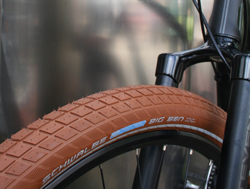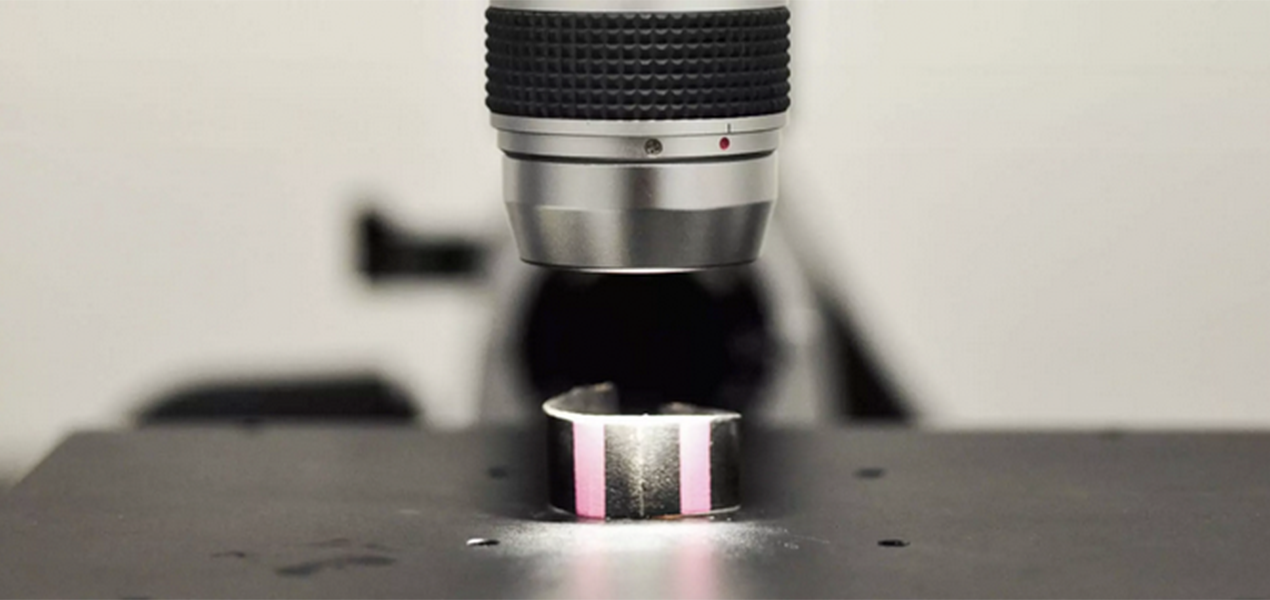WHAT IS A BALLOONBIKE?
We define a balloonbike as an everyday or touring bicycle with particularly large volume tires. With tires widths between 50 and 60 mm it is possible to build a very comfortable bicycle without elaborate suspension technology. The voluminous air cushion of the tires is used as natural suspension. With approx. 2 bar a balloonbike rolls wonderfully easily and with a full suspension effect. A standard tire at a width of 37 mm must be inflated hard to 4 bar to achieve a comparably good rolling performance.

WHAT ARE THE ADVANTAGES WITH REGARD TO FULL SUSPENSION?
In tests the German Sport University Cologne certified balloonbikes a similar comfort as a full suspension bike. On a test course approx. 25 percent less acceleration at the lumbar spine was measured with Big Apple tire equipment (60-622, 2 bar) than on the same bicycle with standard tire equipment. Compared to that a full-suspension bike could reduce the acceleration at the lumbar spine by 33 percent.

WHAT IS THE INTENDED USE OF A BALLOONBIKE?

CAN I FIT WIDE TIRES ON A NORMAL BICYCLE?
This is, of course, possible in general. However, most of today’s normal trekking or city bikes will not offer enough clearance for a balloon tire. Please observe the following points, when you intend to assemble a balloonbike on your own.
Fitting dimensions. The frame or the fork must offer enough clearance for the tire. The exact dimensions of our extra wide tires are given in chapter “Tire Dimensions”. In most cases the tire height is of higher importance than the tire width.


